Which iPad should you buy? There are a lot of choices and it can be confusing. There are four different varieties of iPad, listed below, and each is available with or without 5G cellular, which costs extra and requires a data plan. That’s before we get into storage capacity, colors, and second-hand alternatives.
Our in-depth buying guide assesses the whole range of iPads sold by Apple and explores all the factors that should influence your iPad buying decision such as value for money, how much storage you need, which size will be best for you, and whether or not to buy a cellular version. We also reveal whether an updated version of each device is likely to be launched soon–answering the question of whether now is a good time to buy an iPad.
Best iPad to buy in 2025
The iPad that is best for you will depend on what you need from an iPad. If you just want an iPad for reading books, watching movies and TV shows, email, and web browsing – or for kids who will just be watching Bluey – then you don’t need all the bells and whistles. An iPad or iPad mini might be best here.
If you are looking for an iPad that will do everything that a laptop can, then you might want to consider a model that is more powerful and supports additional components, such as one of Apple’s iPad keyboards or the Apple Pencil, the iPad Air might suit you.
And if you will be using your iPad for gaming, video editing, photo editing, or anything high-powered and graphic intensive, then you should probably look at an iPad Pro.
However, it isn’t as simple as that, as you will see if you read on. Below we will run through every iPad you can buy right now, so you can find the one that’s best for your needs. For each iPad we record the essential information, its pros and cons, which buyer should pick it, and whether now is a good time to buy.
Apple iPad Air 11-inch (M3, 2025): Best iPad for power and affordability
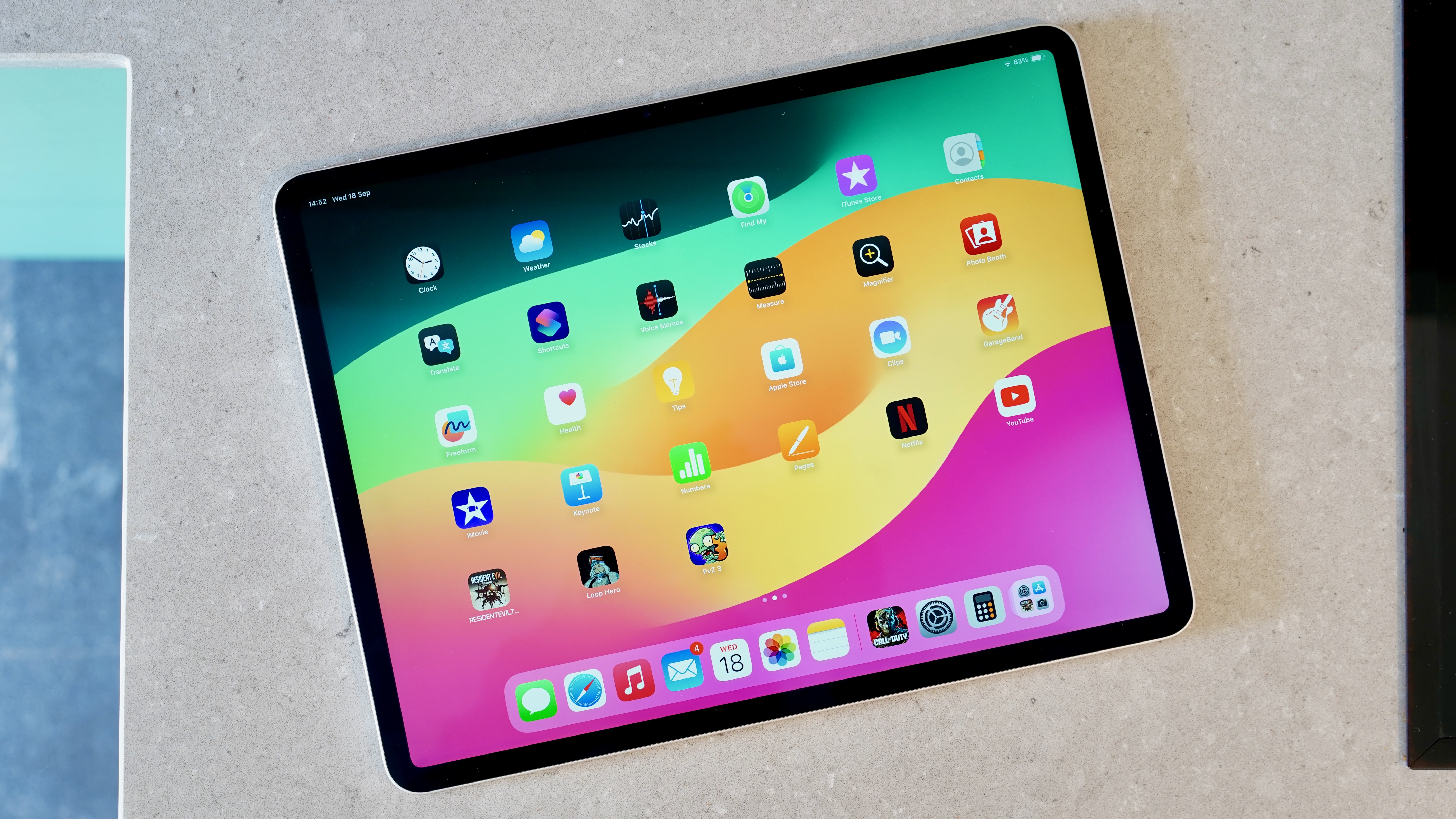
As of March 2025 the 11-inch iPad Air has an M3 processor that is powerful and energy-efficient (you may remember it from its widely praised performance in the Mac). The M3 pushes the iPad Air far ahead of the iPad mini and standard iPads with their A-series chips. The M3 also makes the Air an appealing alternative to the more expensive iPad Pro models, with their faster M4 processors.
Like all recent iPads, the Air features an all-screen design with no Home button. As with the standard iPad and the iPad mini, biometric security is handled by a fingerprint sensor in the power button rather than Face ID, which is reserved for the Pros. It has superb cameras (the front-facing 12MP camera and Center Stage), supports a wide range of Pro accessories, and now features 5G.
Pros: Beautiful design. Superb processing and graphics power. Cheaper than the iPad Pro.
Cons: Screen doesn’t feature ProMotion.
Ideal for: Tablet gamers and anyone who wants to be able to run the most demanding apps now and in the future. Pro users (business, creative, design) who can’t afford an iPad Pro.
Is now a good time to buy? Absolutely. It was updated in March of 2025 and will be around for a while. But would the iPad Pro be better? Read: iPad Air vs iPad Pro, or look below.
See: Best iPad Air deals
Read our full Apple iPad Air 11-inch (M3, 2025) review
Apple iPad mini (A17 Pro, 2024): Best iPad for kids and travelers
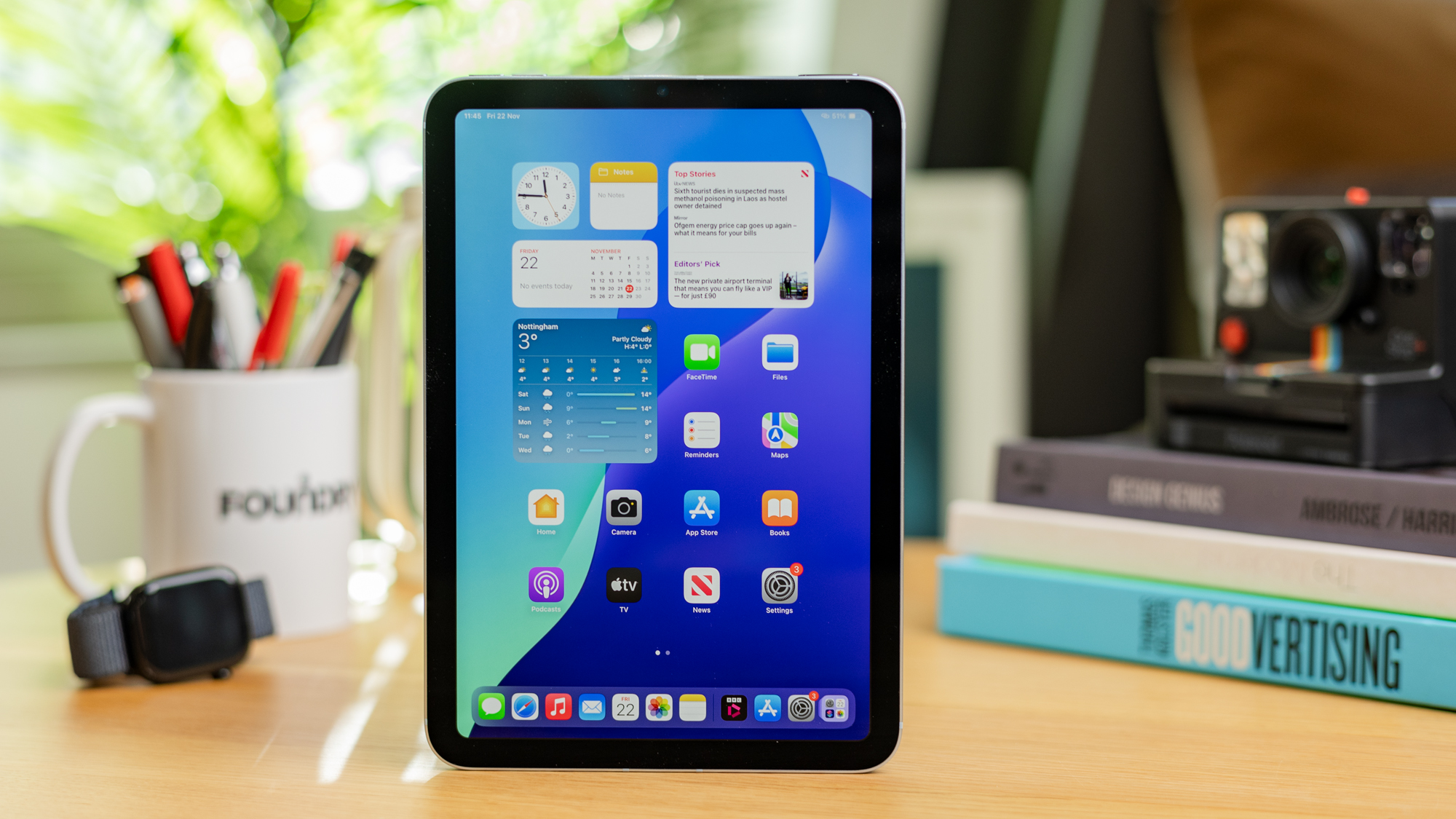
This generation of iPad mini launched in October 2024 and is available in four colors: Blue, Purple, Space Gray, and Starlight.
The biggest draw of the iPad mini is probably its diminutive stature; with its 8.3-inch display it’s Apple’s smallest iPad. It’s perfect for carrying around in a bag or handing to children when they need entertainment.
It might be small, but it is actually more powerful than the standard iPad thanks to its A17 Pro processor, which is a few generations newer than the A14 in the 10th gen iPad and supports Apple Intelligence. You also get a Liquid Retina screen, and 12MP/12MP rear/front cameras.
Pros: Very portable and respectably powerful. The cheapest version now has a decent amount of storage (128GB, previously only 64GB). Supports Apple Pencil (USB-C) or Apple Pencil Pro.
Cons: Small screen, which may not be great for those who get eyestrain or who like immersive films and games.
Best for: The portability-conscious. Gamers on the go. Tablet photographers. Ebook readers. Kids.
Is now a good time to buy? The iPad mini (A17 Pro) was released in October 2024 and an update isn’t expected until mid to late 2026. You’ll likely find it for a little bit lower than Apple’s MSRP at third-party retailers.
Read our full Apple iPad mini (A17 Pro) review
Apple iPad (A16, 2025): Cheapest iPad (for a reason)
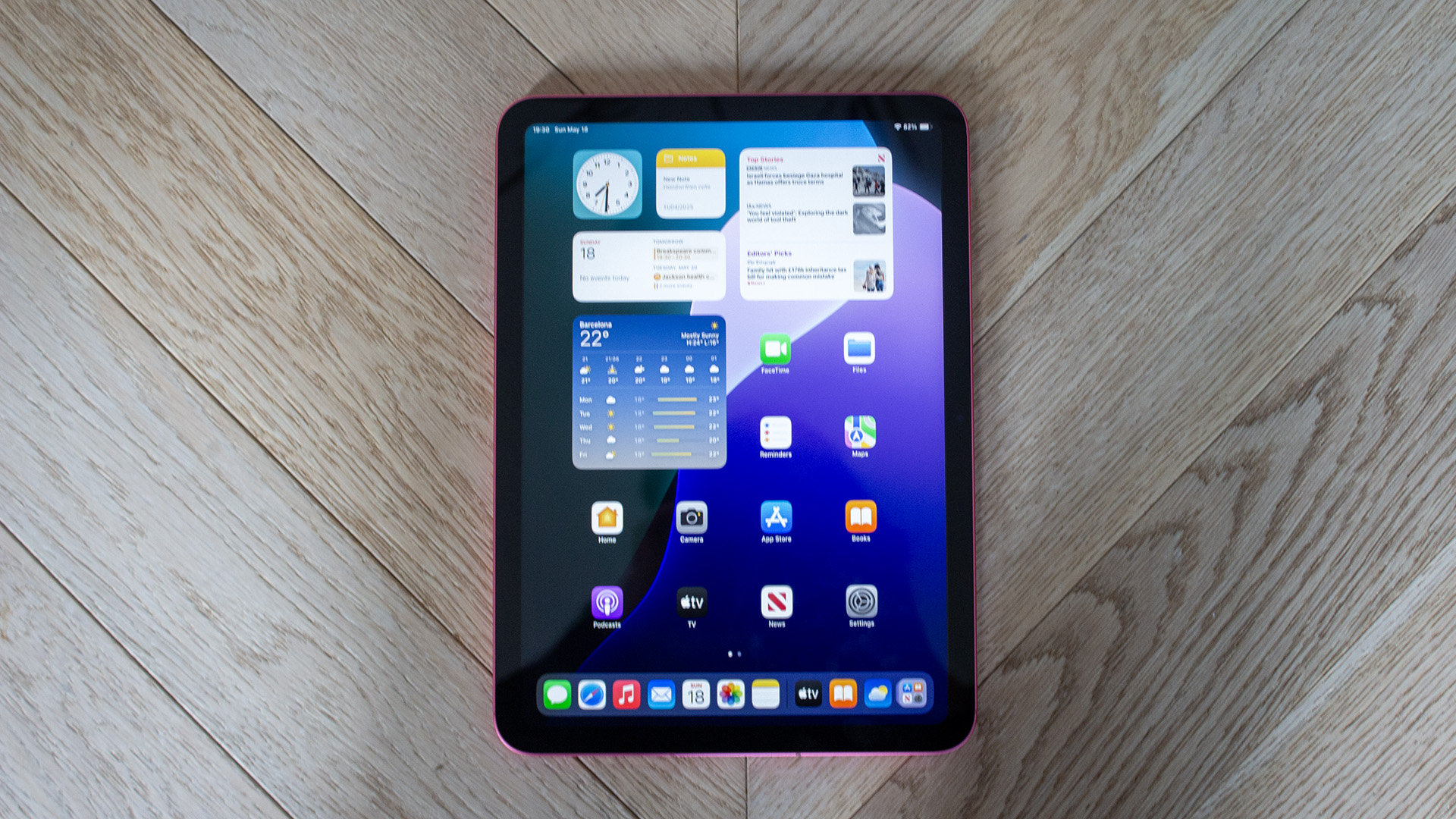
The 2025 iPad (A16) is the cheapest iPad at just $349/£329. It offers a lot of features for the price and it’s available in an assortment of fun colors. It has a 11-inch screen, a USB-C connector, and supports the Apple Pencil 1 or the Apple Pencil (USB). It’s also capable of 5G.
Pros: Good price especially now it starts with 128GB storage.
Cons: Apple picked an A16 chip for this iPad despite the A16 not supporting Apple Intelligence. This is likely to mean it will missing out on features. Still feels cheap due to the unlaminated screen (will Apple ever update this?). Not as thin and light as the iPad Air, or the iPad Pro for that matter.
Best for: Anyone who needs a big screen (not a huge screen; they’ll want the 13-inch iPad Air (or iPad Pro) but is on a budget, and can cope without the latest in processing. It’s a good option for anyone who likes the look of the iPad Air, but not the price.
Is now a good time to buy? Apple is unlikely to update this model until mid to late 2026. If you can wait until then we recommend you do though, because the A16 iPad doesn’t support Apple Intelligence features. If you want the cheapest iPad it’s a good deal, but it might be better to pay a little more for the iPad Air if you can afford to.
Read our full Apple iPad (A16) review
Apple iPad Air 13-inch (M3, 2025): Best value big screen iPad
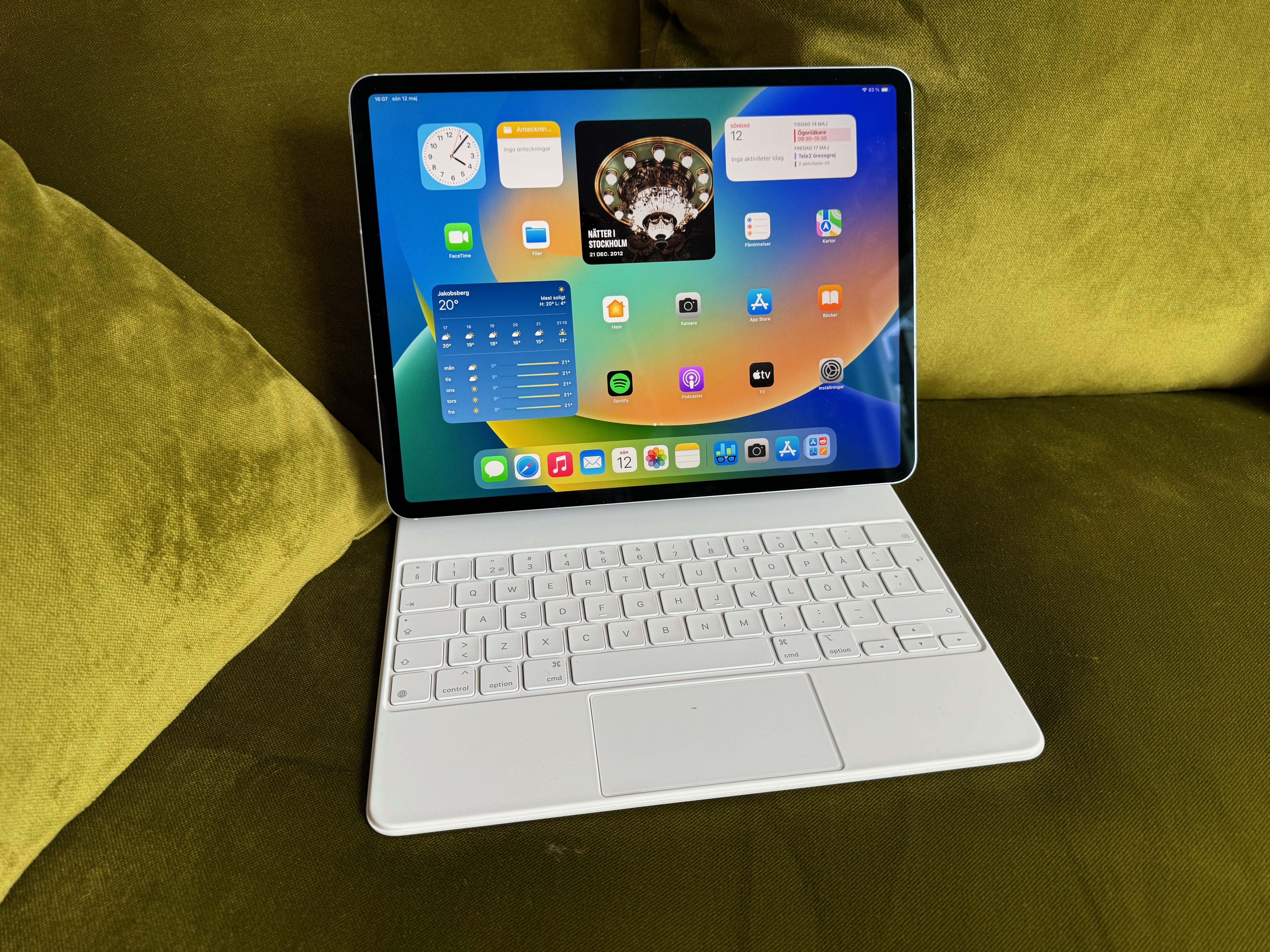
If you want a larger screen, there’s also a 13-inch iPad Air with an M3 processor, making it a viable alternative to the more expensive 13-inch iPad Pro with its M4 chip.
Aside from the bigger screen this iPad Air is identical to the 11-inch iPad Air, with the same all-screen design, fingerprint sensor in the power button and front-facing 12MP camera with Center Stage.
Pros: Large screen. Cheaper than the iPad Pro.
Cons: Screen doesn’t feature ProMotion.
Ideal for: Anyone who want a bigger screen at a lower price than the iPad Pro. It’s a great size for watching films and TV shows (and offers quad-speaker audio to match). Pro users who can’t afford an iPad Pro.
Is now a good time to buy? This iPad Air was introduced in March 2025 and will be around for a while. If you want a big screen and don’t need, or can’t afford, an iPad Pro it’s a great choice.
See: Best iPad Air deals
11-inch iPad Pro (M5, 2025): Best for power users
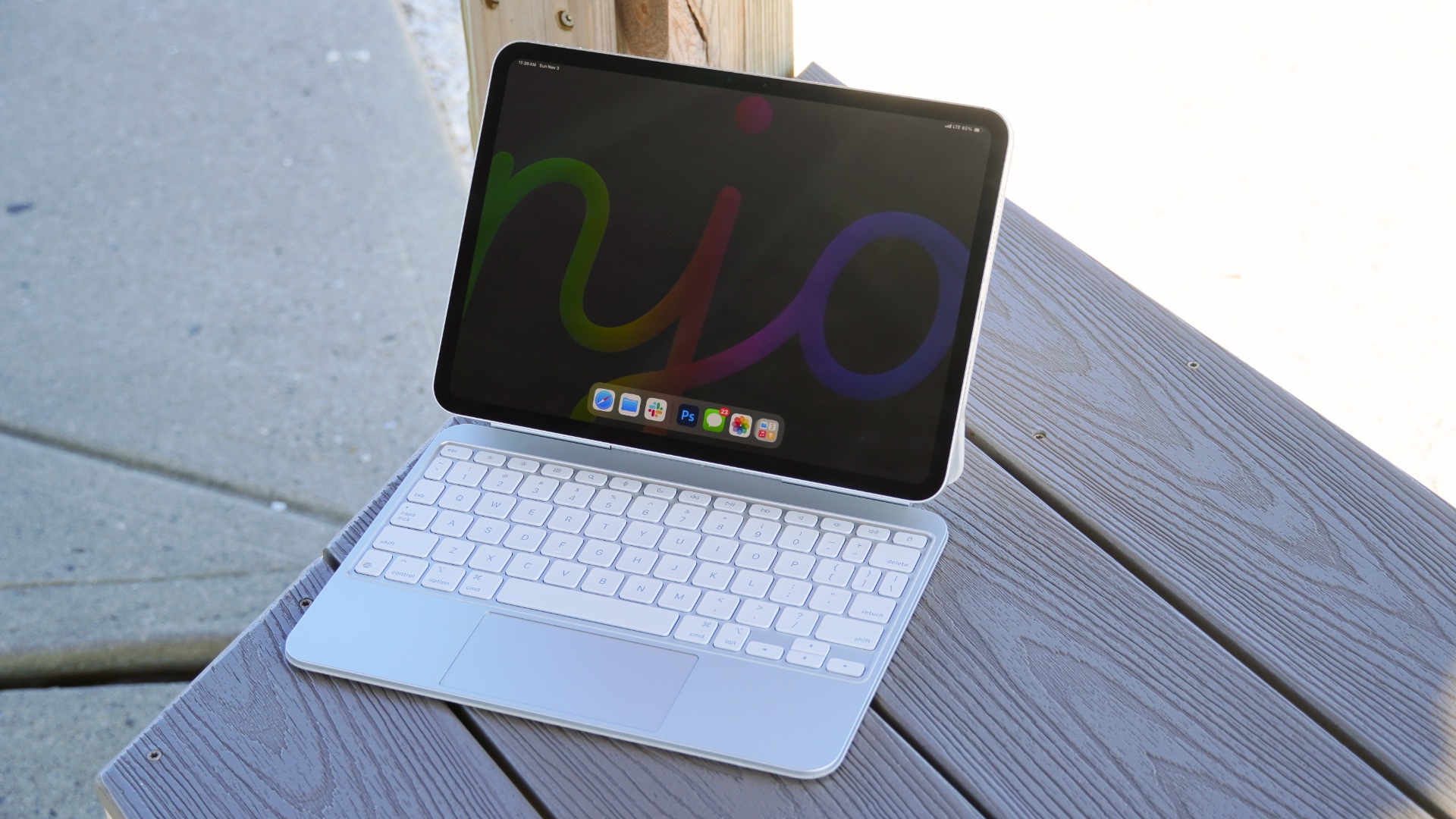
The current generation of iPad Pro models launched in October 2025.
The iPad Pro comes in two sizes and a variety of capacities all the way up to a massive 2TB. The 2025 Pros feature M5 chips and are incredibly powerful–some might say more powerful than it has any right to be.
The 11-inch iPad Pro features a display it calls Ultra Retina XDR, which is an implementation of OLED technology that offers deeper blacks, better details in shadows and low light, and better response to motion. Apple uses two OLED panels in an implementation it calls Tandem OLED to address the brightness concerns of a single OLED panel. The Tandem OLED generates 1000 nits of SDR/HDR brightness and 1600 nits of peak HDR brightness. The display on the iPad Pro differs from the other iPads because it features ProMotion, which means it can automatically vary its refresh rate from 10Hz to 120Hz, which ensures exceptionally smooth on-screen motion.
With the launch of the M4 generation in 2024, the front-facing camera moved to the longer side of the iPad Pro for better use in landscape mode. The M5 and M4 iPad Pro also lack the rear 10MP ultra-wide camera that was on the 4th generation. Apple must have concluded that people don’t use the iPad Pro for photography – scanning however, is provided for: the 12MP main camera uses some AI tricks for scanning.
Pros: Slim and light (even slimmer than the iPad Air!); dual cameras; Face ID; quick and power-efficient processor.
Cons: Very expensive. Its power could be overkill for many.
Ideal for: Creative types who don’t need the absolutely largest screen. It’s great for watching films and TV shows (and offers quad-speaker audio to match), but there are other screens in the range that are a similar size and a lot more affordable.
Is now a good time to buy? The 11-inch M5 iPad Pro was released in October 2025 so it’s unlikely to be updated again until 2027.
See: Best iPad Pro deals
13-inch iPad Pro (M5, 2025): Best big screen for power users
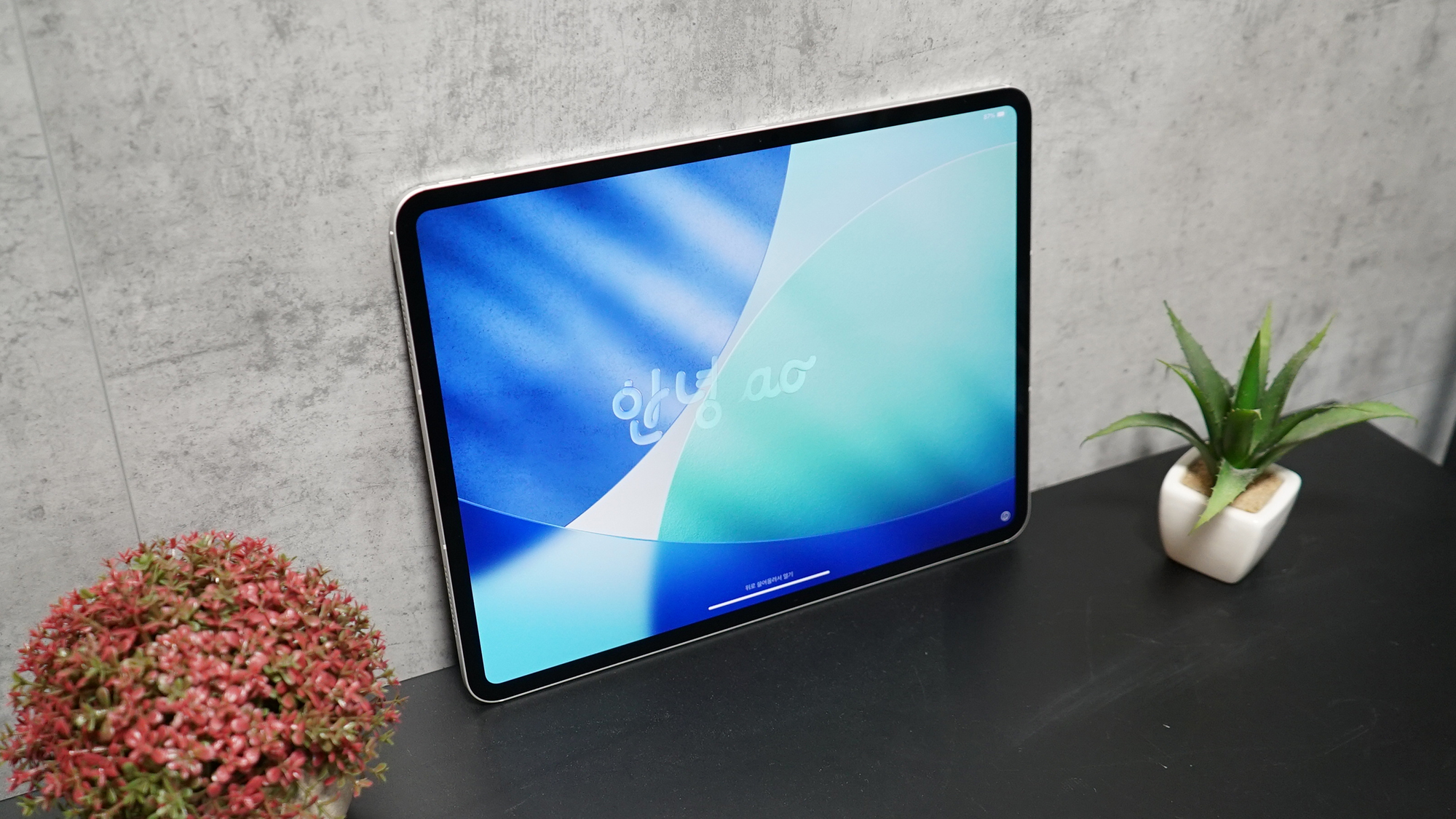
The iPad Pro 13-inch, updated in October 2025, squeezes a huge screen into a relatively small and very thin chassis. The screen is fractionally larger than the iPad Air (2,064 pixels across compared to 2,048 pixels). It’s also fractionally bigger, but not heavier, than the 13-inch iPad Air.
In other respects it’s largely the same as the 11-inch Pro (above): with the same, super-fast processor (the M5), lots of RAM, ProMotion screen, and a user experience that looks more than capable of replacing a laptop.
The 13-inch iPad Pro, like the 11-inch version, has an Ultra Retina XDR. This is based on OLED technology, but Apple uses two OLED panels–it calls Tandem OLED and it generates 1000 nits of SDR/HDR brightness and 1600 nits of peak HDR brightness.
This is all thoroughly impressive. But on the downside, the 13-inch Pro is far less portable than the mid-size iPads (it remains admirably slim, but the sheer screen area makes it a handful) and ruinously expensive, particularly at those upper storage tiers.
Pros: Large screen (13-inch); extremely fast processor with lots of RAM; landscape camera with Face ID; four speakers; Ultra Retina display.
Cons: Very slim, but not as portable as the smaller models; very expensive; processor speed will be overkill for many prospective buyers.
Ideal for: Creative types most of all, but anyone who needs a big screen will be interested. Gamers and those who enjoy consuming media on the go will like the combination of a sumptuous screen and a quad-speaker audio system.
Is now a good time to buy? The current Pros came out in October 2025. Apple isn’t expected to update it until 2027.
See: Best iPad Pro deals
iPad Buying Guide: What to look for when buying an iPad
As you can see from the above there are a lot of iPads sold by Apple–that doesn’t even include the many previous-generation iPads that are still on sale at various resellers and at Apple’s Refurbished Store (U.S) or U.K.
When confronted with so much choice what should you consider when deciding which iPad to buy?
For many the choice will be based on price and value for money. Some may be influenced by the screen size, others by the weight. The ability to get more than 512GB storage may be important, as may the inclusion of Face ID or Touch ID. Finally, the decision of whether to get a cellular version, which invites the assessment of the minefield of network contracts, will no doubt be a factor for some.
We will look at each of those factors below.
How iPad specs compare
The table below summarizes the main features of the iPads in Apple’s current lineup and highlights the price for each. We have more information about the individual iPads and buying advice below.
| Model (launch date) | Key features + specs | Storage + price |
|---|---|---|
| iPad A16 (March 2025) | • 10.9-inch screen | 128GB, $349 / £329 256GB, $449 / £429 512GB, $649 / £629
|
| iPad mini A17 Pro (October 2024) | • 8.3-inch screen | 128GB, $499 / £499 256GB, $599 / £599 512GB, $799 / £799 |
| iPad Air 11-inch M3 (March 2025) | • 11-inch screen | 128GB, $599 / £599 256GB, $699 / £699 512GB, $899 / £899 1TB, $1,249 / £1,249 |
| iPad Air 13-inch M3 (March 2025) | • 13-inch screen | 128GB, $799 / £799 256GB, $899 / £899 512GB, $1,099 / £1,099 1TB, $1,299 / £1,299 |
| iPad Pro 11-inch M5 (October 2025) | • 11-inch screen | 256GB, $999 / £999 512GB, $1,199 / £1,199 1TB, $1,599 / £1,599 2TB, $1,999 / £1,999 |
| iPad Pro 13-inch M5 (October 2025) | • 13-inch screen | 256GB, $1,299 / £1,299 512GB, $1,499 / £1,499 1TB, $1,899 / £1,899 2TB, $2,299 / £2,299 |
Which iPad is the best value for money?
One person’s value for money is another person’s extravagance.
You might be looking for the cheapest iPad. That would be the A16 iPad, launched in March 2025. At just $349/£329 price that’s a bargain in Apple’s terms. It has a 10.9-inch screen, a 12MP rear-facing camera, an A14 Bionic processor, and 5G as an option. The main problem is that it doesn’t support Apple Intelligence, the bunch of AI features Apple has been shouting loudly about. With subsequent versions of iPadOS likely to lean heavily on Apple Intelligence you could get FOMO in the future if you buy this iPad. But if you only need a cheap iPad for the kids it’ll probably do the job, especially now that it has a reasonable amount of storage (no more struggling with 64GB).
An older iPad might be a better choice if you do want a bargain – especially if it is a model that supports AI (any M-series iPad Air will, for example). If you are happy to buy an older iPad model then there are plenty of discounts available while they are still in stock. There are also some great savings to be had on refurbished models. We recommend you check our best iPad deals round up.
If you have more to spend, what can you get for your money? The A17 Pro iPad mini more than justifies its price tag of $499/£499 with its faster (Apple Intelligence-capable) A17 Pro processor, True Tone flash, and a fully laminated, better quality, display, among other things. But its biggest draw will probably be its size for those who want a small iPad. The iPad mini is not much bigger than a hard-backed book making it the perfect size to carry around in a bag and a great size for kids. That’s assuming you want a small iPad, if not, then it won’t be for you.
Next up is the M3 iPad Air, which starts at $599/£599 for the 11-inch model. It might be worth every extra penny if you want a faster M3 processor. The iPad Air display is still superior to that of the iPad, fully laminated and with an antireflective coating (like the iPad mini).
The introduction of an 13-inch iPad Air (in 2024) means that you no longer need to fork out extra for the iPad Pro if you want a larger display on your iPad.
The M5 iPad Pro, last updated in October 2025 is the ultimate in this category. Starting at $999/£999, the Pro has a lot to offer, with an incredible display and an M5 chip for starters. But we think these features are probably more than the average person needs. Then again, if you need those features you can’t beat it, unless you want a bigger screen, in which case get the 13-inch iPad Pro.
Those are the prices that Apple sells its iPads for, but you don’t have to pay that much. Take a look at our regularly updated iPad deals page for the lowest prices and best discounts on iPads new and old.
iPad screen size: Which size iPad to choose
Size is a question of taste rather than simply going for the biggest iPad you can get your hands on. Bigger isn’t necessarily better if what you need is small and light.
The most obvious aspect of this decision comes down to screen size. All screens are measured diagonally from corner to corner, or from the place where the corners would be. You’ve got four options:
- 8.3-inch iPad mini
- 10.9-inch iPad
- 11-inch iPad Air and iPad Pro
- 13-inch iPad Air and iPad Pro
But how big a screen do you really need? You can think of the tablets in terms of print publications: the mini is roughly the height and width of a paperback book; the mid-size iPads are closer to a hardback (albeit much slimmer); and the 13-inch iPad Pro and iPad Air are like a magazine (remember them?)
The screen on the 13-inch iPad Pro is a tiny bit bigger than that on the 13-inch iPad Air, that’s 2,752 x 2,064 pixels vs 2,732 x 2,048 pixels.
The larger screen is obviously better for immersive entertainment. Whether watching films or playing games, it’s a more enjoyable, richer experience. But really this is a question of priorities. Are you more set on getting maximum screen space, or are you willing to compromise on that front in order to get a lower price tag and improved portability?
- iPad Pro 13-inch (2024): 281.6mm x 215.5mm x 65.1mm; 579g/582g (Wi-Fi/cellular)
- iPad Pro 11-inch (2024): 249.7mm x 177.5mm x 5.3mm; 444g/446g
- iPad Air 13-inch (2025): 280.6mm x 214.9mm x 6.1mm 617g/618g
- iPad Air 11-inch (2025): 247.6mm x 178.5mm x 6.1mm; 462g/462g
- iPad 10.9-inch (2025): 248.6mm x 179.5mm x 7mm; 477g/481g
- iPad mini 8.3-inch (2024): 195.4mm x 134.8mm x 6.3mm; 300.5g/308.2g
Want the lightest iPad? As you’d expect, the iPad mini is a lot lighter than the other iPads. There’s a big gap between that device and even the mid-size iPads. As well as its markedly lower weight the mini also has a smaller body, which slips easily into a rucksack or jacket pocket. If you plan to mainly use your iPad out and about, on vacation, or commuting, or perhaps you’re buying an iPad for a child, the mini is your best bet.
The iPad, 11-inch iPad Air, and 11-inch Pro are pleasingly portable, but they still can’t match the mini for portability. The iPad has a similar length and width to the Air, but is thicker and heavier; the Pros are slimmer still.
The 13-inch Pro and Air are considerably less portable than their smaller cousins, but we think Apple has done well to keep the weight down, especially with the Pro, which is actually thinner than the iPad Air (go figure): it remains a slender, relatively lightweight, and portable alternative to a laptop.
How much storage do iPads need?
The five iPads offer anywhere from 128GB to 2TB of storage, but if you are looking at an old, refurbished, or preowned iPad you could be confronted with 64GB or even 32GB storage, which isn’t enough. But what storage capacity do you really need for an iPad?
Well, first of all, remember that you can’t upgrade the storage of an iPad at a later date: this is your limit from now until you buy another iPad, so aim high and buy as much storage as you can afford. It’s better to spend an extra few pounds now than to buy an entire new iPad in six months.
Storage capacity is mainly used up by three things: music, photos, and videos. If you want to keep lots of films or TV shows–or even a few, to be honest–then you need high storage: probably 256GB or higher for video fans. If you’re buying an iPad with the kids in mind, remember that you’ll want storage space for multiple episodes of their favorite show on a long car journey.
The same applies if you have large photo or music libraries, although iCloud Photos and iTunes Match make it possible to keep your stuff in the cloud and access it remotely. The problem with iCloud Photos is that it will store low-res versions of all your images, from all your devices, on your iPad. If your library is huge then even these low-res versions of images can take up a lot of space on your iPad. If you don’t have a lot of storage on your iPad then avoid using iCloud Photos.
The other thing that will fill up your storage is apps, especially games which will use up a lot of space. For that reason gamers should aim high on storage: The iPad, iPad Air and iPad mini start with 128GB and the Pro has 256GB. We recommend getting what you can afford. See: How much storage do you need on an iPhone or iPad? for more advice.
Should you get the most powerful iPad?
The iPad Pro models are, as you would expect, faster than their smaller and cheaper equivalents, next up is the Air, then the iPad mini and finally the iPad. You can get an idea of relative speed by looking at a few relevant specs:
- iPad Pro 13-inch (2025): M5; 8GB/16GB RAM
- iPad Pro 11-inch (2025): M5; 8GB/16GB RAM
- 13-inch iPad Air (2025): M3; 8GB RAM
- 11-inch iPad Air (2025): M3; 8GB RAM
- iPad mini (2024): A17 Pro; 8GB RAM
- iPad 10.9-inch (2025): A15; 4GB RAM
The M-series chips have won widespread acclaim in the Mac range and produce outstanding performance in the iPads. But that doesn’t mean the A chips are sub-standard or incapable of running modern apps; keep in mind that much of the software on the App Store was designed with A chips in mind, and even now most developers will want to make their software accessible for as many iPad owners as possible.
There is a good reason to choose the M-series chips over the A-series though. Some of the most impressive features from iPadOS 26 and iPadOS 18 will only work with the M-series iPads. These include features like Stage Manager, which is a feature for organizing your windows. There are also rumors that one day Apple may make a cutback version of macOS available on the iPad but this will be probably be restricted to the M-series chip, if indeed it ever happens.
But speculation aside, how powerful you need your iPad to be will be based on your requirements (and how long you intend to use your iPad for). The most demanding graphic-design, video-editing, and audio apps will see better performance on the M5, M4, M3 and even M2 processor, so if you’re looking at high-level workloads multiple years down the line the M5 and M4 would be a better option.
But for most users, the A17 Pro will be comfortably fast enough for the mid- and long-term.
Another important factor to consider is memory. Apple doesn’t advertise the fact, but the iPad only has 4GB. The mini and Air gets a jump up to 8GB, while the Pros have either 8GB or a whopping 16GB of RAM, depending on your storage tier: the 1TB and 2TB versions get the higher RAM allocation.<







